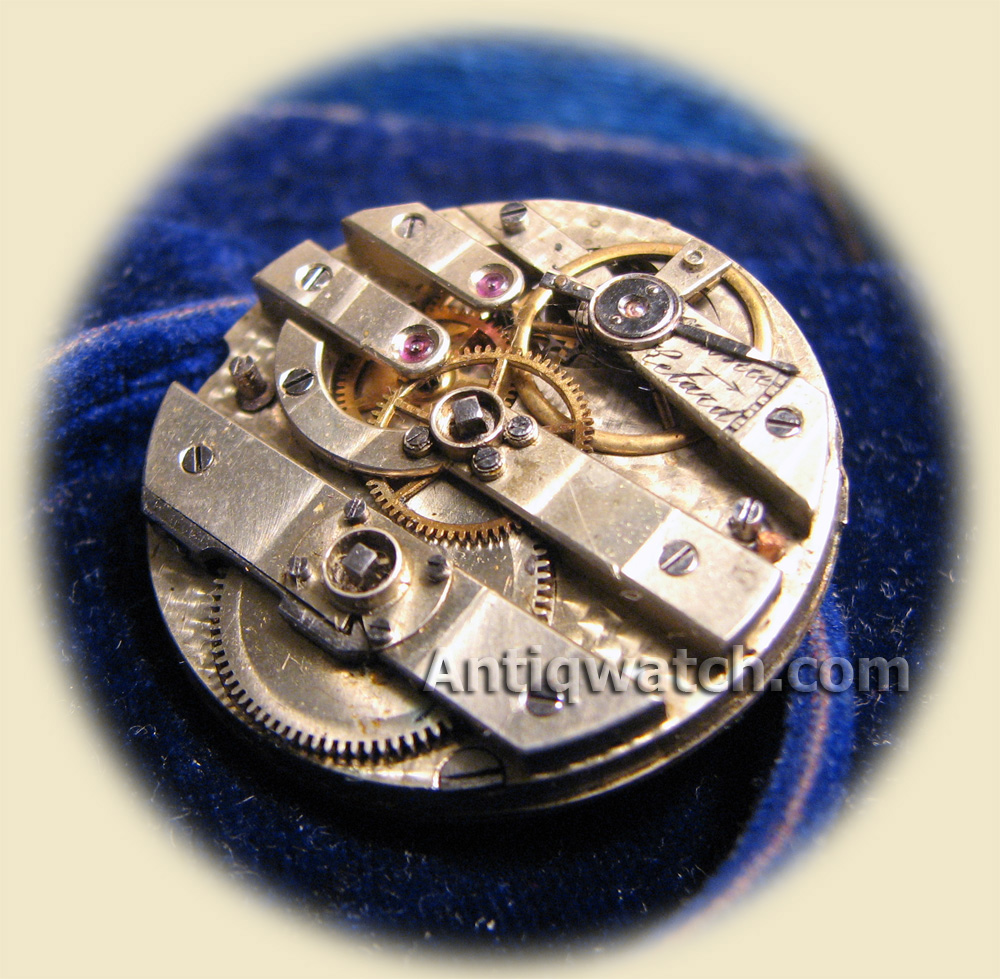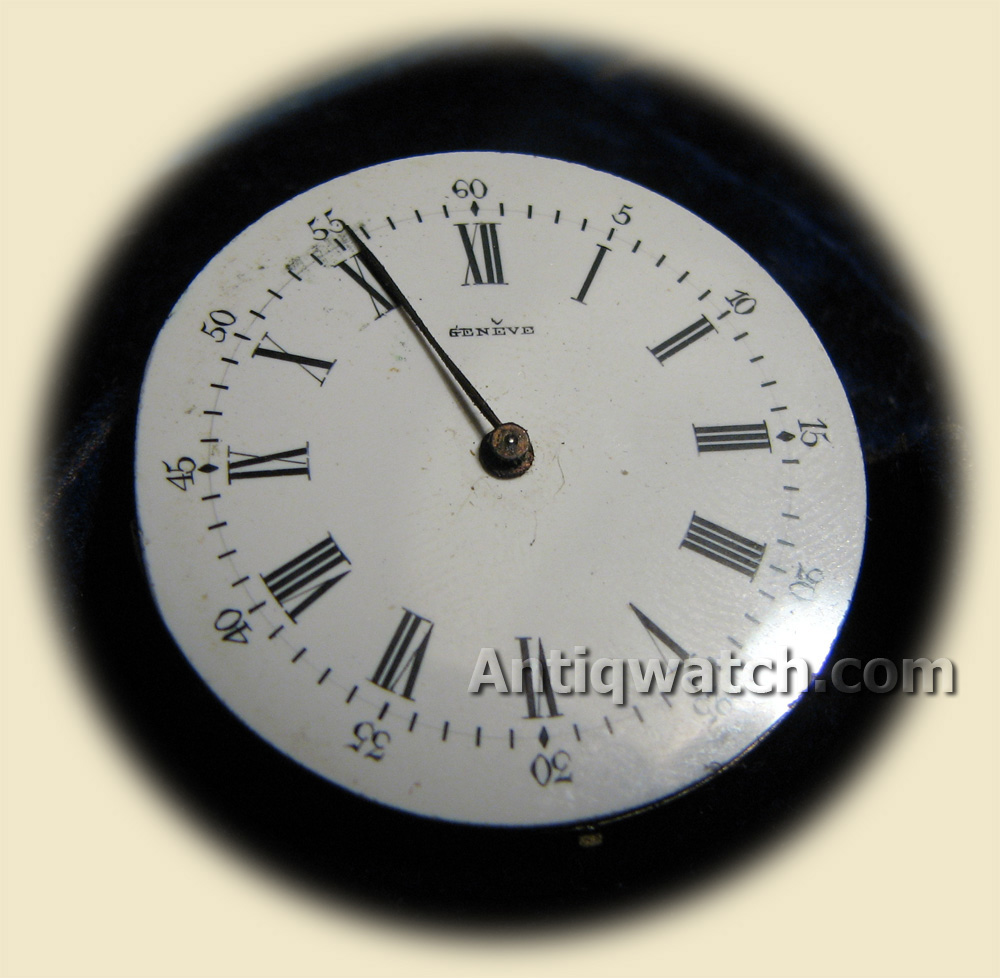Geneve pocket watch
I found one quite geneve pocket watch. This is a 1850-1870’s(?) pocket watch mechanism from Switzerland. The case was gold with an inner cuvette, but it was damaged and not preserved. This case was across 30mm. The clock signed by Geneve (Gen?ve).


The mechanism is a Swiss made cylinder escapement movement. It seems the mechanism is clearly pointed at the midpoint – the second half of the XIX century, during the early technological approach to watch production – with typical of bridges, “fingers”, and manual fine-tuning. But i’m not shure… Minimal number of jewels, typical of cylinder movements.
But it is possible that this is ebauche watch mechanism.

The dial is enamel and Roman numerals in perfect condition.

The minute hand is steel and original to this piece.

To wind this geneve pocket watch has had to put a key (native old-key was lost) into the top slot on the back of the case and when you turn the key it winds up the mainspring. Then to change the hands you put the key into the center slot and when you turn the key it changes the hands.
Cylinder escapement movement. The escape wheel teeth in this mechanism lie in a horizontal plane, and it was known as the “horizontal escapement” (introduced by George Graham in 1726). The escape wheel usually has fifteen wedge-shaped teeth, standing above the rim of the wheel, the pointed end of the “wedge” leading. Mounted on the balance staff is a polished steel tube or hollow cylinder. Nearly one half of which is cut away allowing the teeth to enter as the balance swings back and forth and the wheel rotates. As each tooth enters the cylinder it impulses the balance on the entry lip of the cylinder wall. The tooth rests within the cylinder while the balance completes its oscillation and begins its return journey.In due course the tooth escapes from within the cylinder, again giving impulse as it leaves. The succeeding tooth, which has been held against the outside wall of the cylinder while the first is within and the balance is making its excursion and return, now enters the cylinder, and the process is repeated.
Later the cylinder shell were made out of ruby. It was probably introduced by John Arnold in 1764, though not used to any extent for some years. The second John Ellicott used it in his later cylinder watches, but it was very popular with Breguet.
The cylinder was particularly popular in 19th-century Swiss watchmaking, because of its compactness and quiet running, both arising from the fact that it had few moving parts.
Ebauche – a style of unfinished watch movement mass produced as a cottage industry in Switzerland in the mid to late 1800’s. The movements were sold to retailers or jewelers who “finished” the watch by adding the dial, hands, case, jewels, the escapement, etc. Quite often the name engraved on a European watch from this period is that of the retailer or is a “fake” name similar to a prestige watchmaker. The movement almost never has a name engraved on it, but a brand will be engraved on the back dust cover instead. Swiss watches are considered distinctly second-rate mechanically, although they are often very pretty.
| « Enicar travel alarm clock | Pocket watch restoration sample » |
